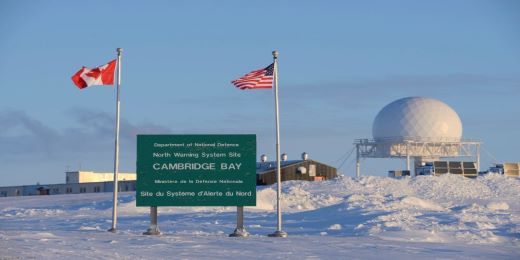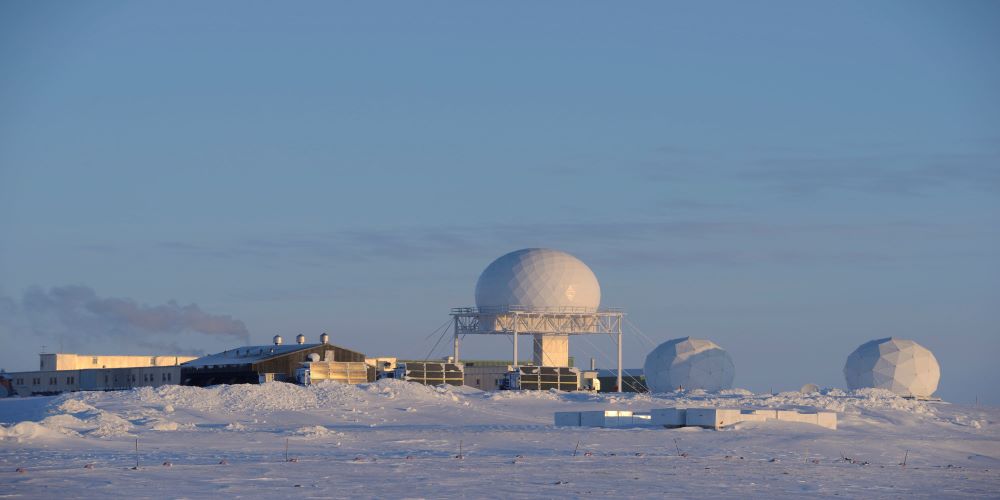Inuit communities are Canada’s eyes and ears in the Arctic
The Canadian Arctic is remarkable for its large populations of polar wildlife and stunning winter landscapes, along with many Inuit communities known collectively as Inuit Nunangat.

This region is also the seat of the North Warning System (NWS), a network of 47 radar and several additional support sites that provide aerospace surveillance of North America’s northern approaches. The NWS is one of Canada’s most significant contributions to the North American Aerospace Defense Command (NORAD).
Maintaining the NWS, which spans 5,000 kilometres from Yukon to Labrador, is a major endeavour. There are hundreds of buildings, helipads, runways, fuel tanks and radar sites that require operation, repair and logistical support services to run at all times. A wide-reaching, coordinated and organized approach to the maintenance work is critical.
In 2022, following a competitive procurement process, a new maintenance contract was awarded to Nasittuq Corporation, a majority-owned Inuit firm. As part of the contracting process, the federal government committed to providing economic benefits to the local Inuit communities, in keeping with Canada’s obligations under 3 comprehensive land claim agreements.
A project of great significance
Public Services and Procurement Canada (PSPC) collaborated on this project with National Defence and other federal partners to deliver on 2 key objectives: defence and support for the Inuit economy.
“It’s critical for the NWS to function without fail,” says Paul Mondoux, with National Defence. “This is the only way we can provide round-the-clock monitoring of our Arctic air space for the defence of North America. We also support Canadian air traffic authorities through the surveillance of transatlantic routes, mainly European flights over Greenland. So, we need a reliable partner on the northern frontline to manage the NWS on a technical level.”

Nasittuq Corporation demonstrated in its bid that it has the capabilities to deliver the work. The company also has strong relationships with Inuit communities in the North and the knowledge to operate in this harsh environment.
Inuit benefits for the communities in the land claim areas were included in previous NWS maintenance contracts. Nonetheless, a key goal for the 2022 contract was to build on those successes and provide even greater benefits to these communities in terms of Inuit participation in NWS activities and professional development opportunities.
As such, the contract was structured so it would be awarded to the firm with the highest combined rating of technical merit, Inuit benefits commitments and cost. After demonstrating their ability to deliver the work, bidders had to meet minimum mandatory requirements for the Inuit benefits and could earn points by exceeding them. This resulted in commitments to unprecedented benefits for the Inuit communities on the part of Nasittuq Corporation.
The benefits include: paying a minimum percent of total wages and salaries to Inuit employees, with increases to this minimum every 2 years; maximizing the use of Inuit-owned firms in carrying out the terms of the contract; employing a minimum number of Inuit supervisors or managers; and allotting $2.5 million annually to Inuit training.
Jody Langelier, President of Nasittuq Corporation, says the contract is key to economic development in the North:
“This contract will open up more opportunities than ever for Inuit through employment, subcontracting and skills development. Inuit will also be sought for management positions. The benefits and economic prosperity will extend to communities across Canada’s North and Arctic regions.”
The road to success
The procurement process, which resulted in the contract award to Nasittuq Corporation, involved significant effort and preparation.
“We first engaged with the Inuit authorities from the 3 land claim areas to discuss the benefits for their communities,” says Nancy Morin from PSPC, “and then with both Inuit and non-Inuit firms through expressions of interest, industry events and meetings. Based on that input, we had to decide how to frame the contract to arrive at an optimal Inuit benefits strategy. Some aspects of the strategy were quite innovative.”

At the same time, the federal team went through a rigorous process to determine the specific requirements of National Defence for the NWS. It’s a complex enterprise, and to meet the operational intent in a changing world, the team had to incorporate some service enhancements, such as faster response and repair times. In addition, new sustainability criteria were introduced to promote greener initiatives and practices, like reducing air polluting emissions.
Consultation with a variety of stakeholders continued throughout the procurement process. For instance, the federal team cooperated with a fairness monitor and also discussed elements of the contract with authorities from the United States (US) Air Force, as the NWS is managed under a cost-share arrangement with the US government.
The resulting NWS maintenance contract supports Canada’s defence policy and strengthens its relationship with Inuit communities while contributing to the government’s goal of awarding at least 5% of federal contacts to Indigenous businesses. We invite you to read more articles about PSPC’s work on Our stories.